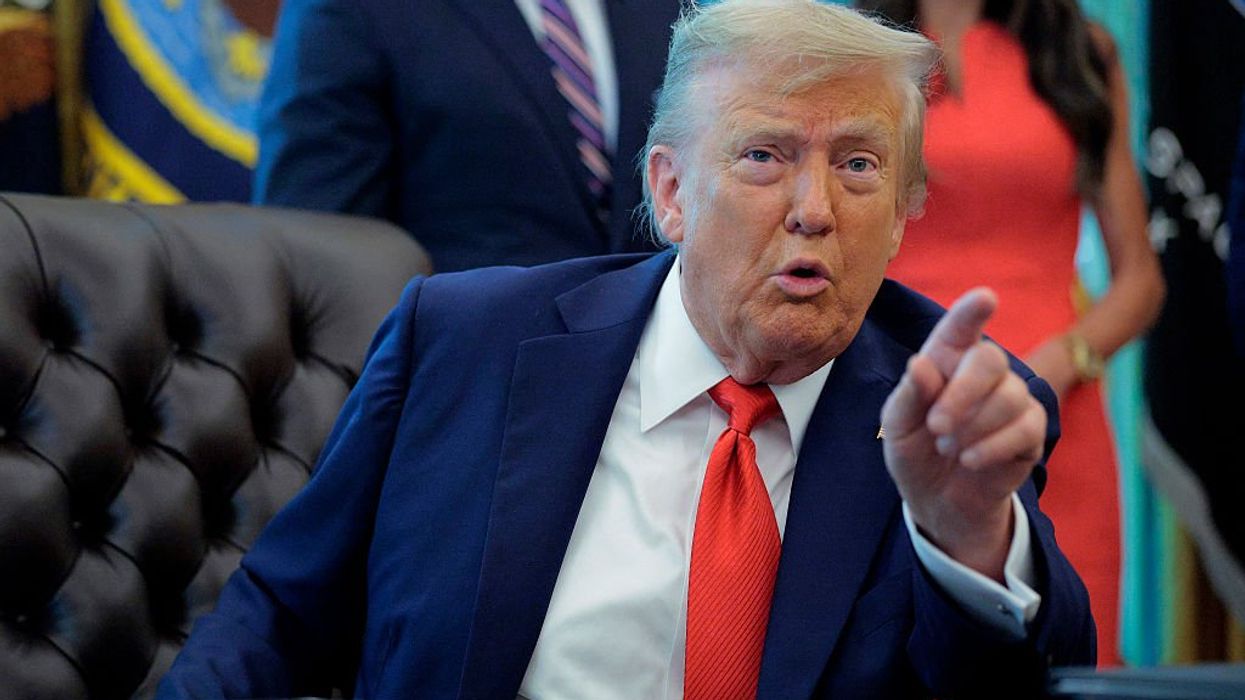“There is no war on women,” Glenn said this morning, “at least from the Republican Party.”
Earlier in the show, Glenn reported on the story of the union thugs who created a piñata of the face of South Carolina Governor Nikki Haley. “The war on women is coming from the left and it sickens me. Ann Romney, of course, has never worked a day in her life. The union piñata that is happening with Nikki Haley, the governor, it’s incredible,” Glenn said.
The attack on Nikki Haley isn’t the worst attack on a conservative woman Glenn saw today. “One of our employees with GBTV, S.E. Cupp, has been so incredibly wronged. You would think this would be illegal, but it’s not,” Glenn said told listeners this morning.
The Blaze reported this morning that Hustler Magazine published a fake photo of S.E. Cupp in a sexual act with what appears to be a penis in her mouth. The pictures is published under the headline “Celebrity Fantasy,” and the text beside the picture asks, “What would S.E. Cupp look like and a [d**k] in her mouth?”
Here is what Hustler had to say about S.E.:
“S.E. Cupp is a lovely young lady who read too much Ayn Rand in high school and ended up joining the dark side. Cupp, an author and media commentator, who often shows up on Fox News programs, is undeniably cute. But her hotness is diminished when she espouses dumb ideas like defunding Planned Parenthood. Perhaps the method pictured here is Ms. Cupp’s suggestion for avoiding an unwanted pregnancy.”
A disclaimer follows: “No such picture of S.E. Cupp actually exists. This composite fantasy is altered from the original for our imagination, does not depict reality, and is not to be taken seriously for any purpose.”
Glenn noted that this is a complete falsehood, and despite the disclaimer on the photo, it will now be out there forever.
This morning on radio S.E. joined Glenn on-air to discuss the disgusting attack.
“It’s a doctored photo, so it’s not like I’m embarrassed because I performed this act and they caught it on film,” S.E. told Glenn. “It’s embarrassing because, as you said, it will be out there forever. The fact that I work really hard, and am an Ivy League educated young woman with a pretty good job doesn’t really matter when you look at a photo like this.”
“You have to wonder if they had done this to somebody like Nancy Pelosi or Michelle Obama, would that stand? Would no one make a stink about it? I have to think they would,” she added.
Addressing President Obama, Glenn said, “if he had a daughter she could look like S.E. Cupp,” and reminded listeners that we live in a world that is all about photos, and when these photos make the rounds the disclaimers rarely follow them. “Does anybody care?” Glenn asked. “Your point here about Michelle Obama – the world would be set on fire if they did this to Michelle Obama, and I would be right with them.”
Pat cited the outrage the left had when the word “slut” was used by someone on the right. What Hustler has done to S.E. is far worse than that.
“I've covered a lot of this misogyny, whether it was Sarah Palin or Ann Coulter and Michelle Malkin, but I've never seen anything this disturbing and graphic,” S.E. said. “But if I can just express a little gratitude for Hustler – and I'm completely serious here – there is an accompanying sidebar to this story, in which they layout why they did this to me. It’s under a hundred words, and in that paragraph they say, ‘S.E. Cupp she's lovely, she's smart, she’s fine, but she happens to be a crazy conservative, who is pro-life, and wants to defund Planned Parenthood. And for that, she deserves a phallus in her mouth.’ That is essentially what they’re saying, and I have to commend that as being incredibly honest. There are people in the media that perform this misogyny on women like me who cannot be that honest, who cannot come out and say ‘I disagree with you politically, therefore I feel like you deserve this kind of treatment.’ They will not say that. The National Organization for Women, N.O.W., will not coming out and say ‘liberal women deserve more respect, and we are not going to defend conservative women.’ They are not going to admit to that.”
“Frankly, I wish that these media entities that perform this kind of misogyny would just come out and do what Hustler did, instead of beating around the bush and pretending to be fair, pretending to be above that. They're not above that. This is exactly what they do every single time,” she added.
In other words, Hustler magazine has higher standards than the media and the National Organization for Women, Glenn translated.
“That's exactly right. It's more straightforward. They have uncomplicated this belief system, which exists on the left and right.” S.E. responded. “They have uncomplicated this belief system that my political views, my being pro-life, make this kind of behavior okay. It justifies it, and I essentially deserve it. That is honesty on this issue I have never seen before.”
The media has never been shy about attacking conservative women, despite their “feminist” tone, but this latest attack on S.E. is one of the most disturbing ones to be published in recent weeks. Glenn, who knows more than most what it is like to be dishonestly attacked and smeared by the mainstream media, explained how, because this fabricated photo was published, it will never disappear. The disclaimer will most likely be lost, but whenever someone Google’s S.E. Cupp this photo will be there.
“This is a woman who eventually will have children, and her children will see that picture of their mother. It will not come with a disclaimer,” Glenn said. “We live in a world now that is all about photos. You don't know the difference between reality and fiction anywhere, and here's a picture that will go out on the Internet, and forever be the one when you Google her it will forever pop up. Is this wrong, Democrats? Is this wrong? And I don't put you in the category of Hustler. But where is the line?”
S.E. Cupp is one of the brightest young commentators in the political news media. She didn't get into politics to spend time having to defend herself or become the topic of discussion. Glenn made a call for Hustler to remove the photo this morning. The left-wing organizations like N.O.W. and the Democrat Party constantly accuse the GOP of waging a "War of Women," but remain silent whenever a conservative woman is attacked.
Standing up for someone who is being unfairly attacked and smeared should not be a partisan issue.

 Kean Collection / Staff | Getty Images
Kean Collection / Staff | Getty Images
 Bloomberg / Contributor | Getty Images
Bloomberg / Contributor | Getty Images Chip Somodevilla / Staff | Getty Images
Chip Somodevilla / Staff | Getty Images